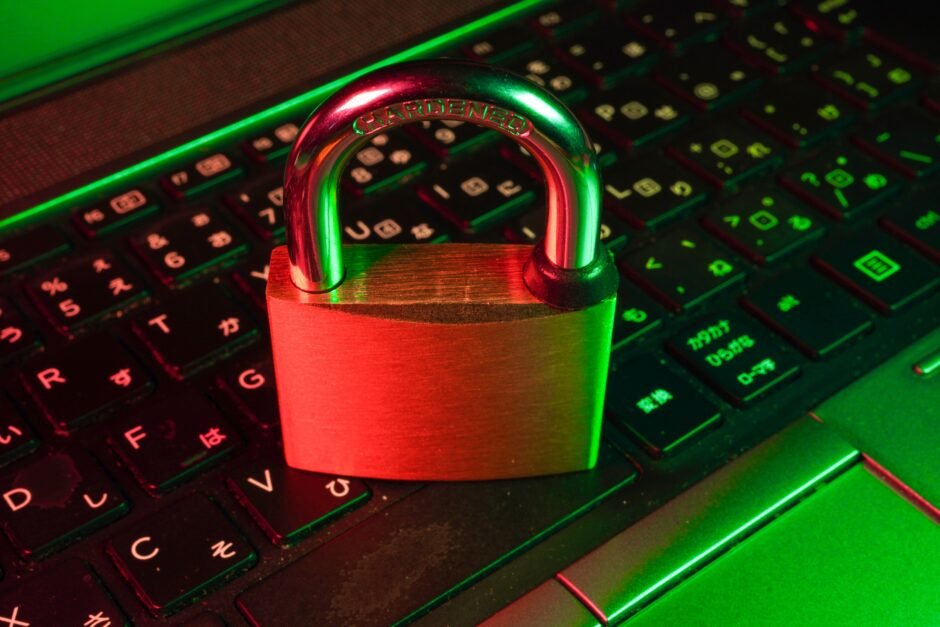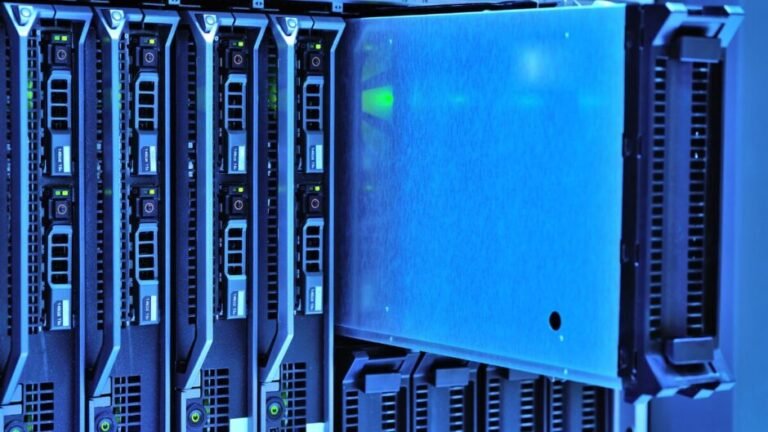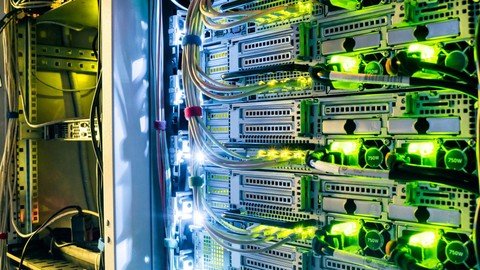VLAN Hopping Prevention Tips VLAN hopping is a security vulnerability that allows an attacker to gain unauthorized access to network resources by exploiting weaknesses in the implementation of Virtual Local…
Dot1x Port-Based Authentication: Enhancing Network Security

Introduction
In today’s digital age, network security is of utmost importance. Organizations need to ensure that only authorized devices and users have access to their network resources. One effective method to achieve this is by implementing Dot1x port-based authentication. This blog post will explore the concept of Dot1x authentication, its benefits, and how it can be implemented in a network environment.

Understanding Dot1x Authentication
Dot1x, also known as IEEE 802.1X, is an industry-standard protocol that provides port-based network access control. It allows network administrators to authenticate devices or users before granting them access to the network. Dot1x authentication operates at the data link layer (Layer 2) of the OSI model, providing an additional layer of security.
Key Components of Dot1x Authentication
Dot1x authentication involves three key components:
- Supplicant: The device or user seeking network access.
- Authenticator: The network device, such as a switch, that controls access to the network.
- Authentication Server: The server responsible for verifying the credentials of the supplicant.
Benefits of Dot1x Authentication
Implementing Dot1x authentication offers several benefits for network security:
- Enhanced Access Control: Dot1x ensures that only authorized devices or users can connect to the network, preventing unauthorized access.
- Improved Network Visibility: Dot1x provides detailed information about connected devices, such as device type, MAC address, and user identity, enhancing network visibility and management.
- Centralized Authentication: Dot1x authentication can be integrated with existing authentication servers, such as RADIUS or Active Directory, allowing for centralized control and management of user credentials.
- Dynamic VLAN Assignment: Dot1x can assign users to specific VLANs based on their authentication status, ensuring proper network segmentation and access control.
Implementing Dot1x Authentication
To implement Dot1x authentication, the network infrastructure needs to support the protocol. Most modern network switches and access points have built-in Dot1x support. Here’s a high-level overview of the steps involved in implementing Dot1x authentication:
Step 1: Configure the Authenticator
The first step is to configure the network device acting as the authenticator. This involves enabling Dot1x authentication on the desired ports and configuring the authentication method, such as EAP (Extensible Authentication Protocol).

Step 2: Configure the Authentication Server
Next, the authentication server needs to be configured to handle the authentication requests from the authenticator. This involves setting up the necessary user accounts and configuring the authentication protocols supported by the server.
Step 3: Configure the Supplicant
The supplicant device, such as a laptop or smartphone, needs to be configured to support Dot1x authentication. This involves configuring the supplicant software or device settings to provide the necessary credentials for authentication.
Step 4: Test and Troubleshoot
Once the configuration is complete, it is essential to test the Dot1x authentication setup thoroughly. This includes verifying that devices can authenticate successfully, troubleshooting any issues that may arise, and ensuring that the desired access control policies are enforced.
Code Example: Configuring Dot1x on a Cisco Switch
Switch(config)# dot1x system-auth-control Switch(config)# interface GigabitEthernet0/1 Switch(config-if)# dot1x port-control auto
Conclusion
Dot1x port-based authentication is a powerful tool for enhancing network security and controlling access to network resources. By implementing Dot1x authentication, organizations can ensure that only authorized devices and users can connect to their networks, improving overall network security and reducing the risk of unauthorized access or data breaches.

Remember, network security is an ongoing process, and it is crucial to regularly review and update the Dot1x authentication configuration to adapt to changing security requirements and emerging threats.
Implementing Dot1x authentication may require technical expertise and careful planning. It is recommended to consult with network security professionals or seek assistance from experienced IT personnel to ensure a smooth and secure implementation.
here are 15 multiple-choice questions (MCQs) along with their respective answers on the topic of “Dot1x Port-Based Authentication”:
MCQs:
What does Dot1x stand for in networking?
A) Dynamic IP Assignment Protocol
B) Dot1x Port-Based Authentication Protocol
C) Dynamic VLAN Assignment Protocol
D) Data Over Transmission Protocol
Answer: B) Dot1x Port-Based Authentication Protocol
What is the primary purpose of Dot1x?
A) Secure VLAN trunking
B) Encrypting data packets
C) Authenticating network users/devices
D) Managing Quality of Service (QoS)
Answer: C) Authenticating network users/devices

Which IEEE standard defines Dot1x?
A) 802.1X
B) 802.11ac
C) 802.3af
D) 802.16e
Answer: A) 802.1X
What type of network access does Dot1x control?
A) Physical access only
B) Logical access only
C) Both physical and logical access
D) Application-based access
Answer: C) Both physical and logical access
Which entity is responsible for initiating the authentication process in Dot1x?
A) Authenticator
B) Supplicant
C) Authentication Server
D) Network Switch
Answer: B) Supplicant
What role does the Authenticator play in Dot1x authentication?
A) It verifies user credentials
B) It controls access to network resources
C) It authenticates the network device
D) It provides encryption keys
Answer: B) It controls access to network resources
What is EAP in the context of Dot1x?
A) Extensible Authentication Protocol
B) Enhanced Access Provisioning
C) Encrypted Authentication Process
D) Extended Authorization Protocol
Answer: A) Extensible Authentication Protocol
Which entity holds the user credentials in Dot1x authentication?
A) Authentication Server
B) Supplicant
C) Authenticator
D) Network Access Control (NAC)
Answer: A) Authentication Server
What happens if the authentication process fails in Dot1x?
A) Access is granted by default
B) Access is denied
C) Network switches to a secure mode
D) Another authentication attempt is made
Answer: B) Access is denied
What is the role of the RADIUS server in Dot1x authentication?
A) Assigning VLANs to devices
B) Providing encryption keys
C) Authenticating users/devices
D) Configuring network switches
Answer: C) Authenticating users/devices
Which component periodically sends EAPOL messages to the supplicant in Dot1x?
A) Authenticator
B) RADIUS Server
C) Network Switch
D) Authentication Server
Answer: A) Authenticator

Which protocol is commonly used between the Authenticator and the Authentication Server in Dot1x?
A) SNMP
B) RADIUS
C) TCP/IP
D) ICMP
Answer: B) RADIUS
What information does the EAPOL (EAP over LAN) protocol carry in Dot1x authentication?
A) User credentials
B) Encryption keys
C) Authentication status and messages
D) VLAN information
Answer: C) Authentication status and messages
In Dot1x, what authentication factors are commonly used for user/device authentication?
A) Only username and password
B) Only biometric data
C) Username, password, and digital certificates
D) MAC addresses and IP addresses
Answer: C) Username, password, and digital certificates
Which entity enforces the access policy based on the authentication results in Dot1x?
A) Supplicant
B) Authentication Server
C) Authenticator
D) Network Administrator
Answer: C) Authenticator
These questions aim to assess understanding of Dot1x port-based authentication, covering its components, protocols used, authentication process, and its role in securing network access for users/devices.

https://itexamsusa.blogspot.com/2023/12/a-comprehensive-guide-to-machine.html
https://itexamsusa.blogspot.com/2023/10/exam-dp-203-data-engineering-on.html
https://itexamsusa.blogspot.com/2023/10/ccnp-enterprise-advanced-routing-enarsi.html
https://itexamsusa.blogspot.com/2023/10/comptia-project-pk0-005-cert-guide.html
https://itexamsusa.blogspot.com/2023/09/spring-framework-5-to-build-end-to-end.html
https://itexamsusa.blogspot.com/2023/08/how-to-become-blockchain-developer.html
https://itexamsusa.blogspot.com/2023/07/ultimate-blogging-tips-for-beginners.html
https://itexamsusa.blogspot.com/2023/07/cisco-bandwidth-vs-clock-rate-and-speed.html






































